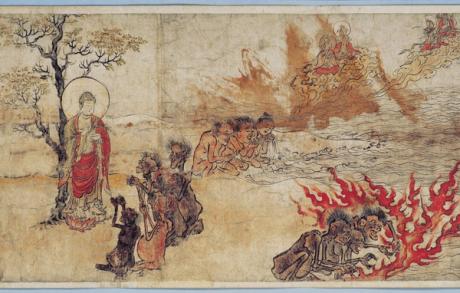Banquetas Chéveres (Chéveres Stools)
2017 - Installation (Installation)
21.75 x 19 x 17.5 inches each
Jorge González
Easy to fold and carry, Jorge González’s Banquetas Chéveres (Chéveres Stools) embody the nomadic and flexible nature of the Escuela de Oficios. González’s work employs a modernist language while paying homage to artisanal techniques specific to Puerto Rico and the Indigenous knowledge, people, and histories of the Carribean. Reinterpreting the furniture line ArKlu (1945-1948) conceived by the architects Stephen Arneson and Henry Klumb, the stools were conceived in collaboration with various artisans in Puerto Rico–Eustaquio Alers, a weaver from Aguadilla, Joe Hernández from Ciales, and MAOF from San Juan, a contemporary wood-salvaging collective, among others. The seats are inspired by the furniture line ArKlu (1945-1948) conceived by the architects Stephen Arneson and Henry Klumb, whose practice encouraged ethical design principles, and named in honor of the craft-working Chévere family the artist met during a research trip in Puerto Rico and who descends from the Taíno, an Indigenous people of the Caribbean thought to have been eradicated during the Spanish conquest. In the Caribbean, the Spanish word chévere loosely translates as “more than cool” in English and evokes both a culture and a state of being.
Layering references from ancient and modern influences, Jorge González’s work revolves around re-establishing lost artistic techniques of the Caribbean, and in particular Puerto Rico. His socially-engaged practice finds its manifestation in collaboration with various artisans and in-depth research of lost trades related to arts and crafts. González was inspired by German-American architect Henry Klumb’s collaboration with craft workers when he arrived to the island to found the Escuela de Oficios (Trade School), which functions as a symbolic space that honors Klumb’s ideals about learning. At the Escuela de Oficios, knowledge—ranging from ancestral techniques to collective practices—is shared during mobile meetings taking place across Puerto Rico so that participants can learn from local artisans and engage in conversation, workshops, and exhibitions.
Colors:
Related works sharing similar palette
» see more

© » THEARTNEWSPER
Cities are the heroes in an 'easy-going and unpreachy' publication that takes us on whirlwind tour of art history Art market Museums & heritage Exhibitions Books Podcasts Columns Technology Adventures with Van Gogh Search Search Books review Cities are the heroes in an 'easy-going and unpreachy' publication that takes us on whirlwind tour of art history Fifteen art capitals are captured at their brilliant apogee in Caroline Campbell's book Keith Miller 6 February 2024 Share Detail of Hungry Ghosts Scroll (late 12th century) by an unknown artist Kyoto National Museum The last book I reviewed with this title was by the historian Simon Schama...

© » ARTS EQUATOR
Pandemic in the Philippines: A cultural sector on its own | ArtsEquator Thinking and Talking about Arts and Culture in Southeast Asia Articles August 17, 2020 By Katrina Stuart Santiago (2,200 words, 8-minute read) When I was first asked to write about “cultural leadership” in the Philippines, I turned up a blank...

© » KADIST
Young Min Moon
2022Young Min Moon’s recent paintings repetitively portray the rituals bound up in the Korean tradition of Jesa...
Related works found in the same semantic group
» see more

© » KADIST
Chemi Rosado-Seijo
2016Map of the Universe from El Cerro continues Chemi Rosado-Seijo’s long-term engagement with the community of El Cerro , a rural, working-class community living in the mountains of Naranjito, Puerto Rico...




